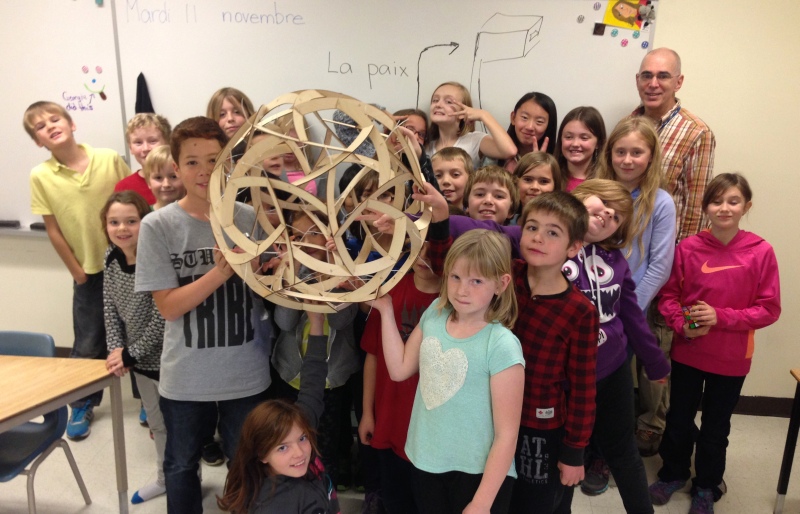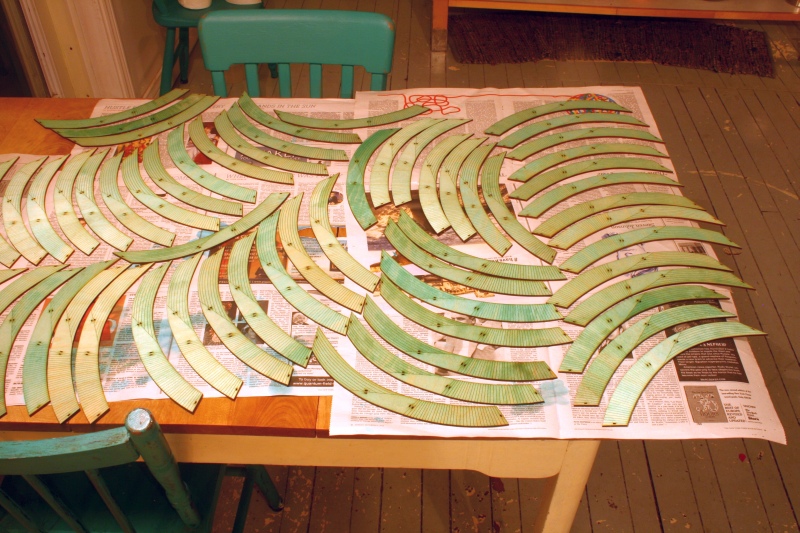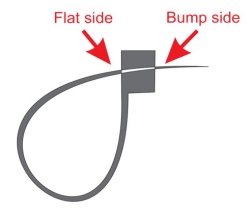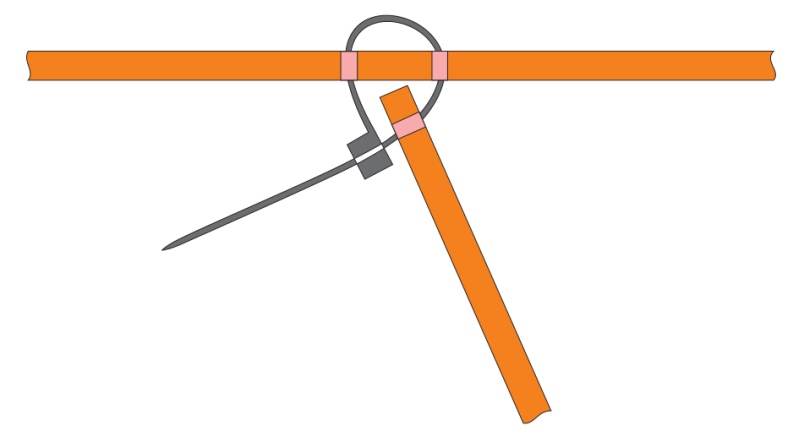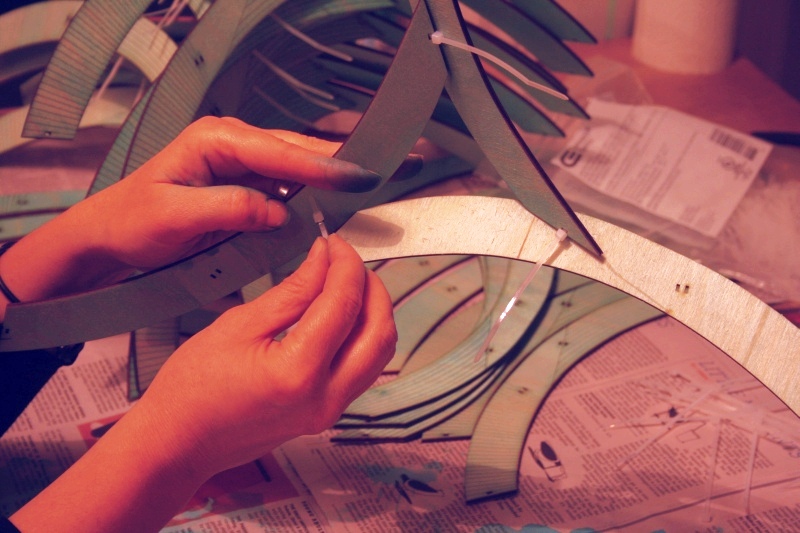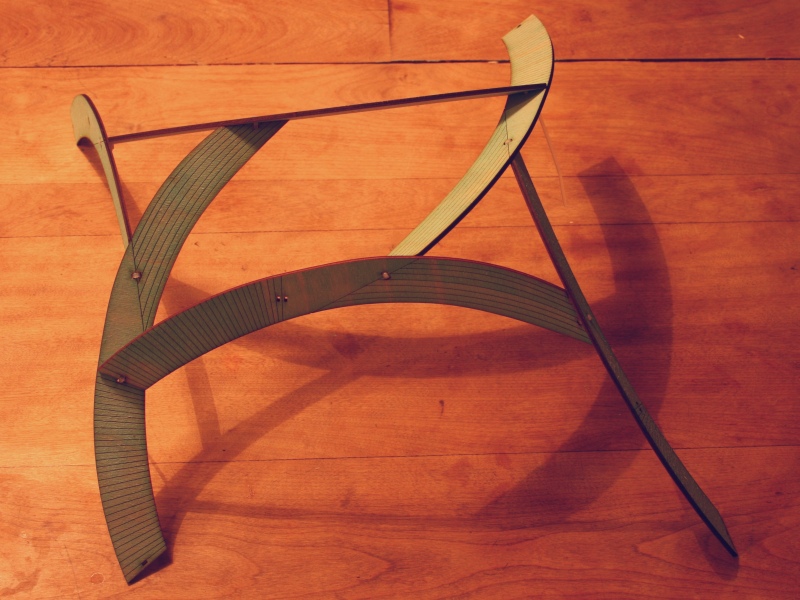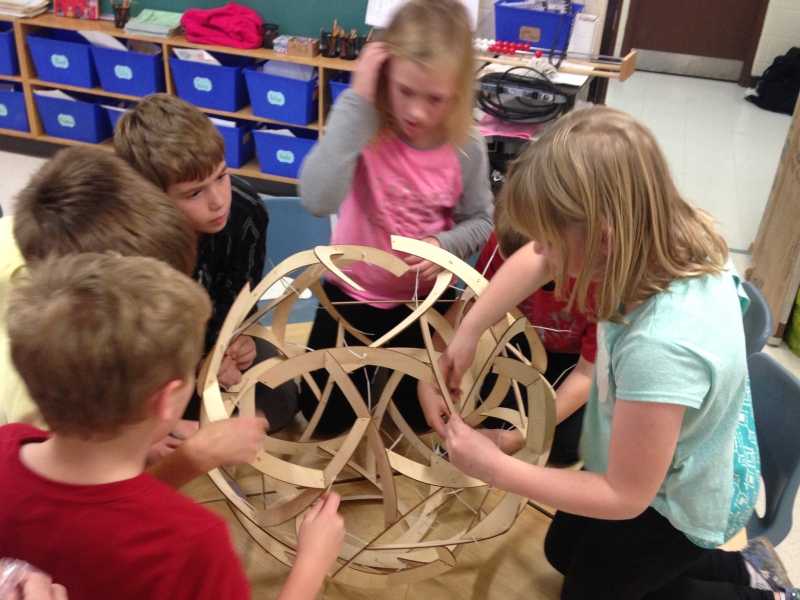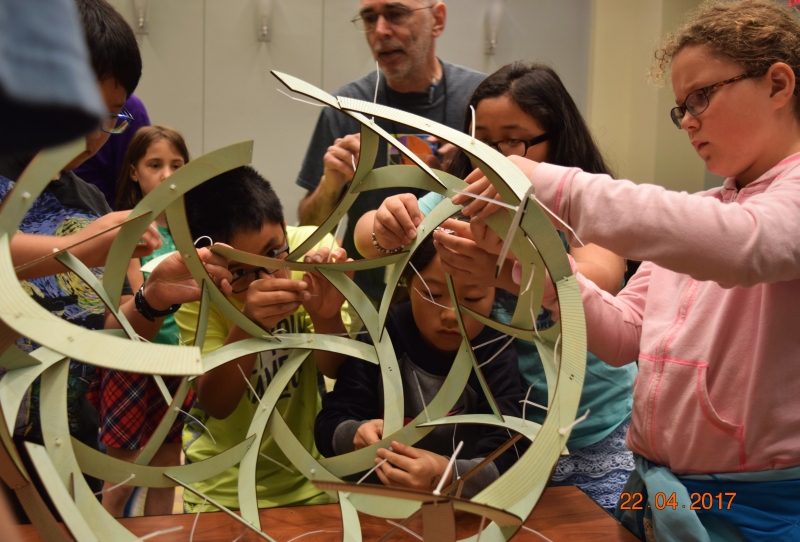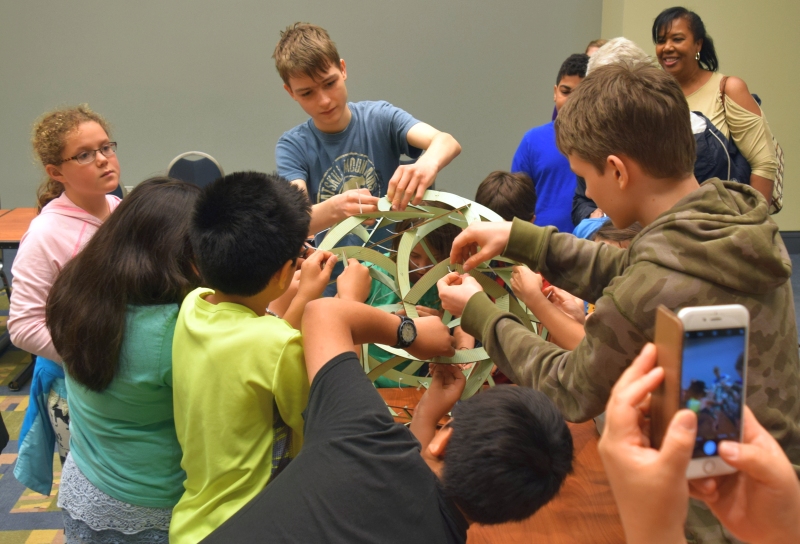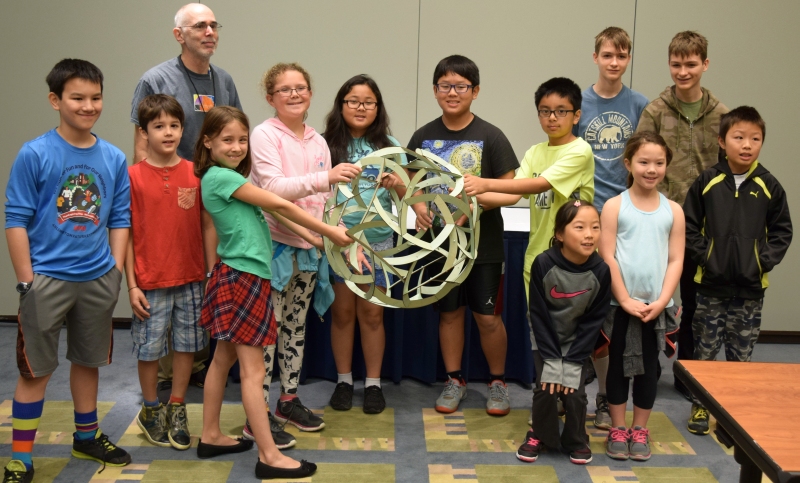6. Check each module to ensure the parts are
properly joined and the ties are tight. You can snip off
the tails with the wire cutter as a mark of which modules you
have checked.
7. Choose a table everyone can see for the assembly. One
way to begin is for two groups to bring their modules and join
them to make an "H-unit," shown above, using two cable
ties. They will now be using the less pointy ends of the
part and the pair of holes closer to that end. For this
connection, the end meets the
front (etched) side of the
part, as above. Again, start the cable tie at the back
side of the piece, so the box is largely hidden inside. A
general tip is that some students can hold a piece in position
where it is to be attached while other students connect the
cable ties.
8. The overall process is that a few groups at a time should
take turns bringing their modules to the central table where the
sculpture is built. Modules or H-units can be added in
many possible orders to a single growing structure. (It
would not work to try making two separate "halves" and hope they
fit together!) It is OK if several groups make
H-units separately first, but also leave some modules free to
insert individually as the final steps. During all this
time, any group not working on the growing construction at the
center of the room can take three more parts and three more ties
and make another module, continuing until all twenty modules are
complete.
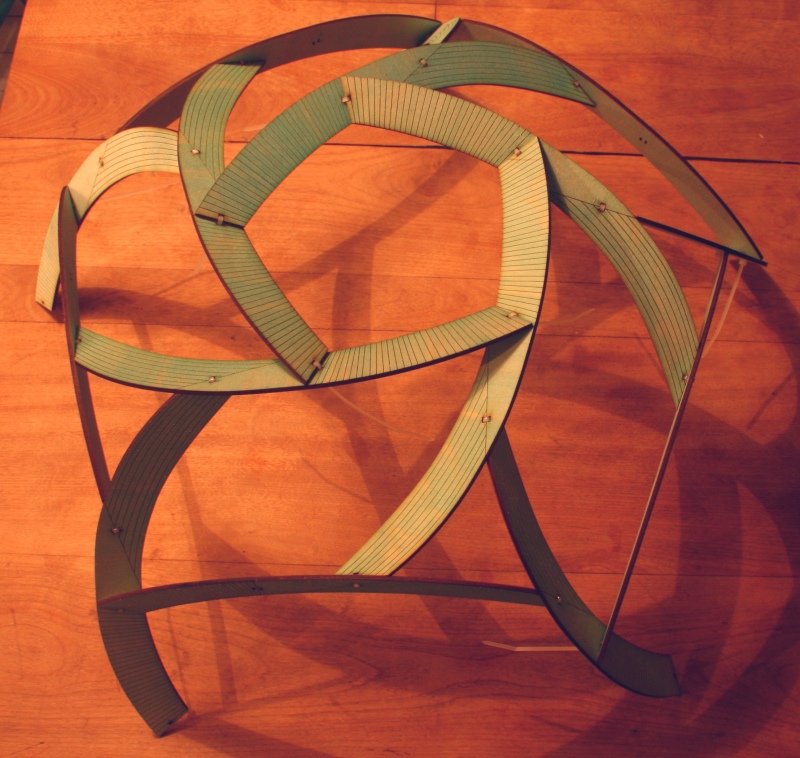
9. Along the way, point out or let students discover that five
modules (which might be, e.g., two H-units plus one module) form
a pentagonal unit, as shown above. Emphasize the five-fold
rotational symmetry. When at least this much is complete,
turn it over so it rests on the pentagon and students can add
modules and H-units from all sides at once. Allow each
group to have a turn then make room for others. Allow them
to answer each other's questions about where to connect
everything. Students will see the patterns and figure out
how to extend them to complete the sculpture.
10. When complete, check all the connections are correct, all
the cable ties are tight, and snip off the ends of the ties.
10. While working, you can ask students who aren't engaged in
the construction to figure out how many cable ties are needed
all together. From the fact that there are 60 pieces and
each touches four others they should determine there are 120
cable ties. That's 60·4 = 240 connection locations, but
divided by two because each tie joins two connection locations.
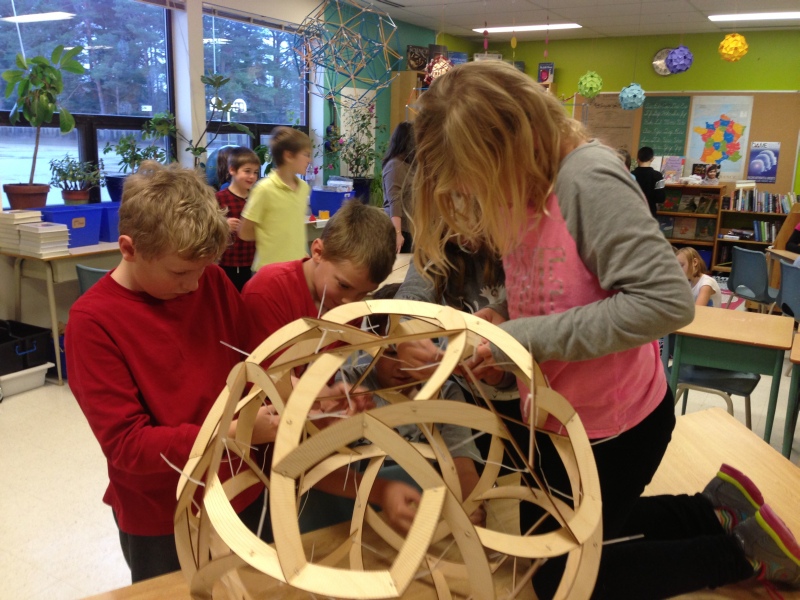
11. Take photos before you hang it up
on display.
